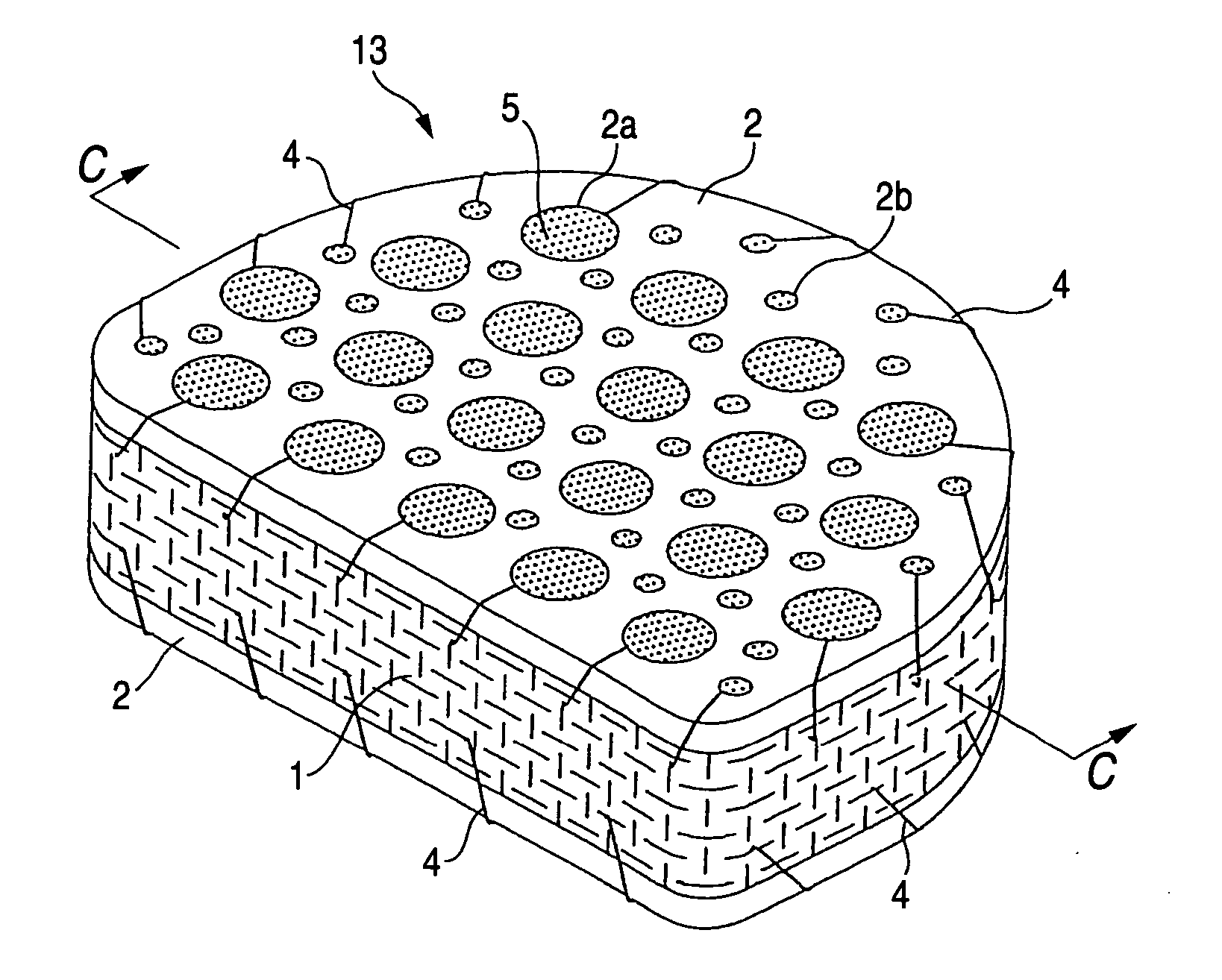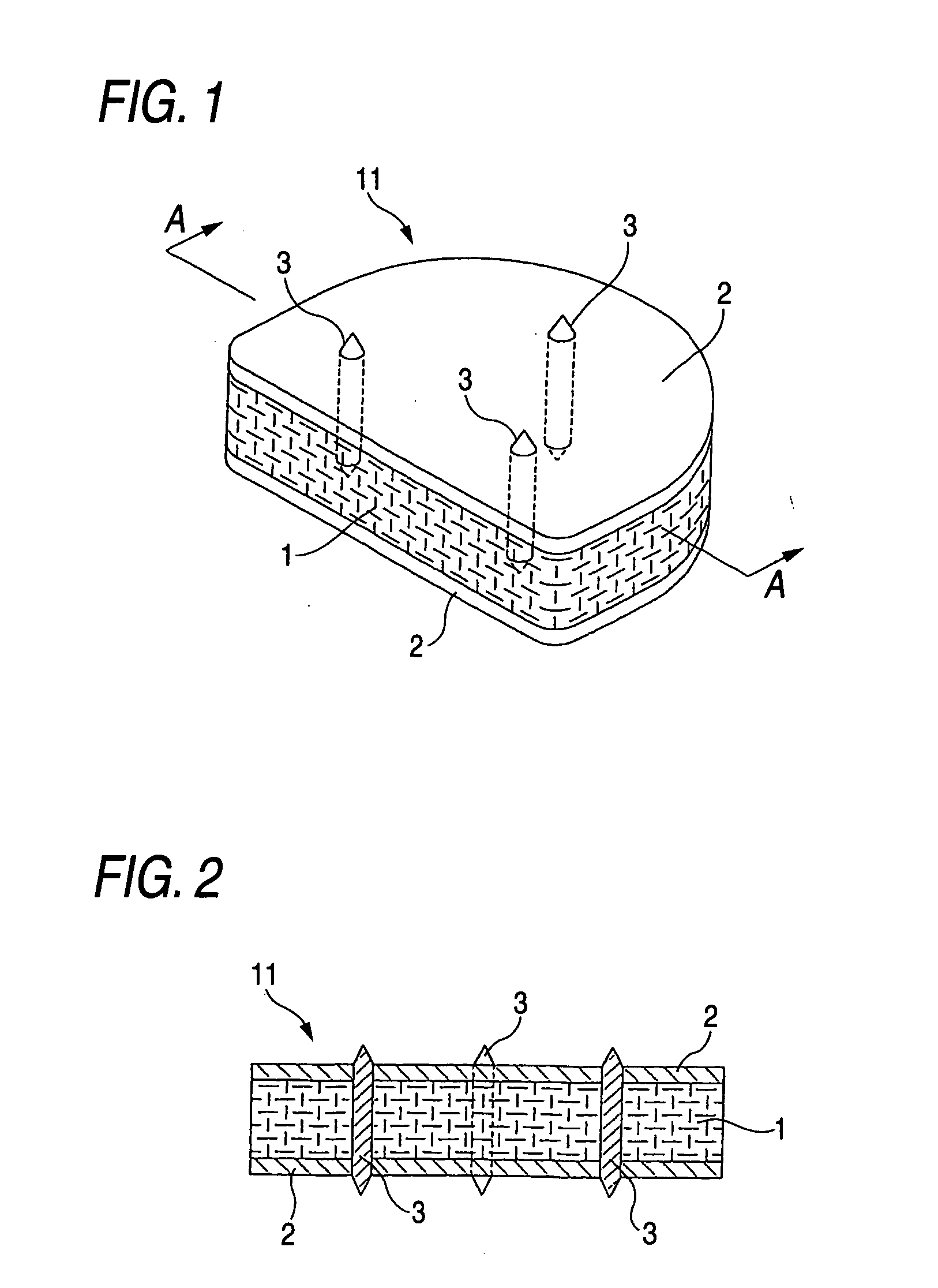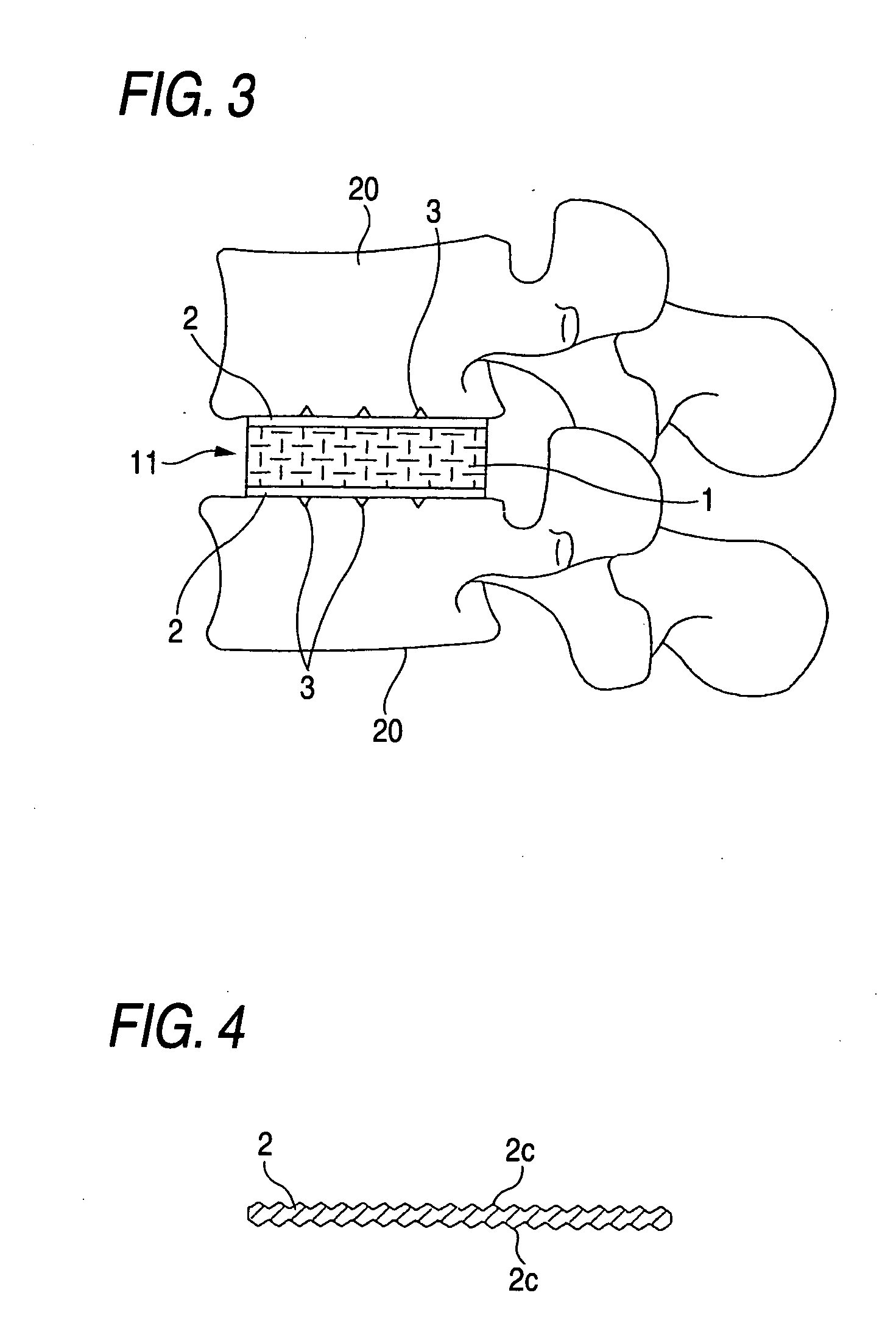Biomaterial for artificial cartilage
- Summary
- Abstract
- Description
- Claims
- Application Information
AI Technical Summary
Benefits of technology
Problems solved by technology
Method used
Image
Examples
Embodiment Construction
[0034] Embodiments of the invention will be explained below by reference to the drawings.
[0035] The biomedical material for artificial cartilage 11 shown in FIG. 1 is in a block form having a planar shape which is nearly square at the front and rounded at the rear, i.e., which comprises a rectangular front-half part and a semi-circular rear-half part united therewith. This biomaterial 11 is intended to be inserted as a whole replacement type artificial intervertebral disk between adjacent vertebral bodies 20 and 20 in the vertebral (especially lumbar vertebral) column or the cervical vertebral column from the obverse side as shown in FIG. 3. This size of this biomedical material for artificial cartilage 11 varies depending on whether it is for use as an artificial intervertebral disk for the cervical vertebrae or as an artificial intervertebral disk for lumbar vertebrae and depending on whether it is for adults or for children. For example, in the case where the biomaterial 11 is f...
PUM
| Property | Measurement | Unit |
|---|---|---|
| Fraction | aaaaa | aaaaa |
| Electrical conductivity | aaaaa | aaaaa |
| Flexibility | aaaaa | aaaaa |
Abstract
Description
Claims
Application Information
 Login to View More
Login to View More - R&D
- Intellectual Property
- Life Sciences
- Materials
- Tech Scout
- Unparalleled Data Quality
- Higher Quality Content
- 60% Fewer Hallucinations
Browse by: Latest US Patents, China's latest patents, Technical Efficacy Thesaurus, Application Domain, Technology Topic, Popular Technical Reports.
© 2025 PatSnap. All rights reserved.Legal|Privacy policy|Modern Slavery Act Transparency Statement|Sitemap|About US| Contact US: help@patsnap.com



